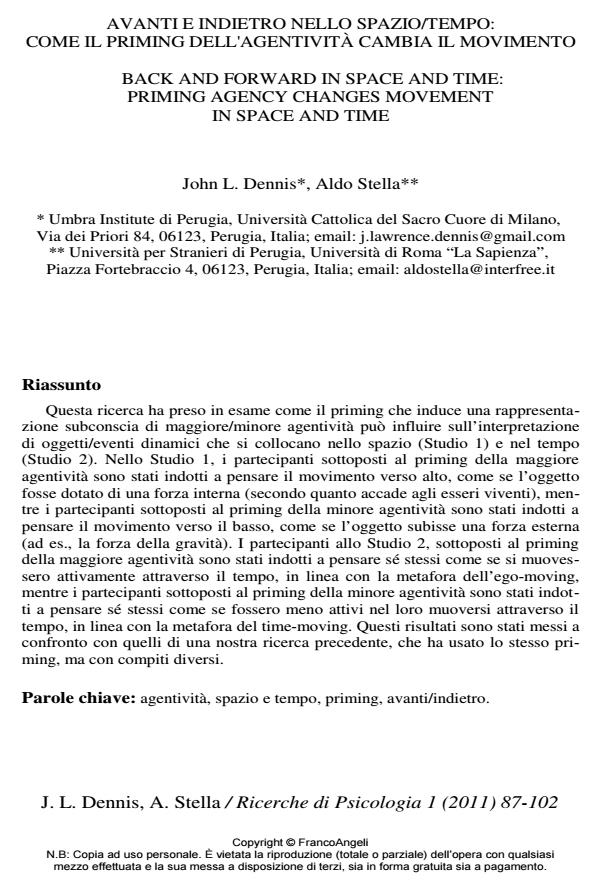Back and forward in space and time: priming agency changes movement in space and time
Journal title RICERCHE DI PSICOLOGIA
Author/s John L. Dennis, Aldo Stella
Publishing Year 2012 Issue 2011/1
Language Italian Pages 16 P. 87-102 File size 150 KB
DOI 10.3280/RIP2011-001005
DOI is like a bar code for intellectual property: to have more infomation
click here
Below, you can see the article first page
If you want to buy this article in PDF format, you can do it, following the instructions to buy download credits

FrancoAngeli is member of Publishers International Linking Association, Inc (PILA), a not-for-profit association which run the CrossRef service enabling links to and from online scholarly content.
This research investigated how high and low agency subconsciously primed representations influence the interpretation of dynamic objects/events in space (Study 1) and time (Study 2). In Study 1, participants primed with the high agency concept were more inclined to think of objects in space as moving upwards, as if the event was provided with an internal force (much like what happens with living things), while participants who were primed with the low agency concept were more inclined to think of objects in space as moving downwards, as if the event was subject to an external force (much like what happens with gravity). Participants in Study 2, primed with the high agency concept were induced to think of themselves as if they were moving actively through time, in line with the egomoving metaphor, while subjected prime with the low agency concept were induced to think of themselves as if they were less active in their movement through time, in line with the time-moving metaphor. These results were compared with those of our previous research, which used the same subconscious priming, but with different tasks.
Keywords: Agency, space and time, priming, back/forward.
John L. Dennis, Aldo Stella, Avanti e indietro nello spazio/tempo: come il priming dell'agentività cambia il movimento in "RICERCHE DI PSICOLOGIA " 1/2011, pp 87-102, DOI: 10.3280/RIP2011-001005